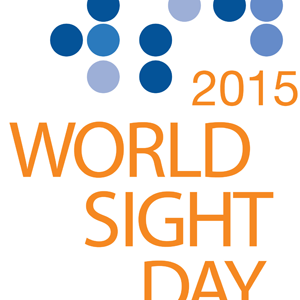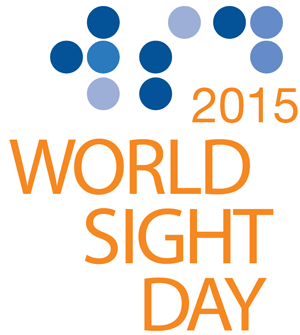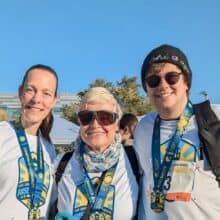
Happy World Sight Day!
Oct. 8 is World Sight Day, a global observance that aims to create awareness about blindness and visual impairment. This celebration is coordinated by the International Agency for the Prevention of Blindness, and occurs the second Thursday of October each year. Organizations throughout the world hold events to raise awareness about this date. More importantly, however, this day is intended to create awareness about the increasing number of people with blindness and vision loss, especially in some of the poorest countries.
Why is it important?
The following are some statistics from the International Agency for the Prevention of Blindness and the World Health Organization:
- Around 285 million individuals are blind or visually impaired.
- A startling 80 percent of cases are preventable
- Blindness prevention strategies and sight restorations are among the most cost-effective health care interventions
- About 90 percent of people with vision loss live in low-income countries.
- 65 percent of blind and visually impaired people are older than 50. This number is expected to increase with the aging of the baby boomers.
- Around 19 million children are blind or visually impaired.
What can be done?
Eye conditions like cataracts, diabetes and glaucoma are among the most common causes of blindness. In most cases, vision loss can be prevented or avoided by using simple health care strategies and inexpensive procedures. Yet, the most poor and vulnerable groups affected by these conditions often do not have access to this type of health care. We should also keep in mind that coping strategies and resources are equally important for those with irreversible vision loss. These include things like access to education, rehabilitation and support groups.
How can you help?
The ongoing theme for World Sight Day is universal eye care for all, and there are many ways we all can help make this possible. Politicians and key policy makers should learn about and value the importance of providing the necessary resources for people to maintain good eye health, especially among the most vulnerable populations. This may include providing free or low cost eye exams and access to information about preventative measures people with and without eye diseases can take. Scientists and doctors can also contribute with their research of both the prevention and management of vision loss.
Those who already have access to good health care can easily detect and even prevent vision loss by getting an eye exam even before they suspect vision problems. We also have the power of making a difference for others by advocating better vision care resources to our local governments.
People who are blind or visually impaired should be provided with the necessary information and tools to cope and succeed. Sadly, many children and adults still do not have access to the education and rehabilitation they need to become independent and productive members of their communities. We as a society should also do are part to find new ways to integrate and include more blind and visually impaired people in our schools and workplace and cultural settings.
What is being done?
Many organizations, such as Lions Clubs International, are always working to help those in need of vision care resources. Donating recycled glasses and providing free eye exams to underserved communities are just a few of the ways in which they make a difference in the lives of those experiencing or who might experience vision loss.
We at The Chicago Lighthouse are always looking for better ways to prevent and manage vision loss in individuals of all ages. By providing eye exams through our low vision clinic, reading newspapers and magazines via CRIS Radio and selling the latest in assistive technology, we make a difference in the lives of people with visual impairments. Although World Sight Day is celebrated once a year, we can all work every day to provide good eye care for all.






